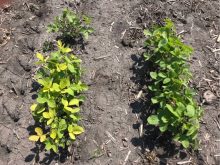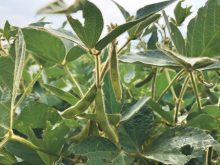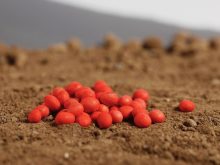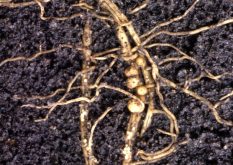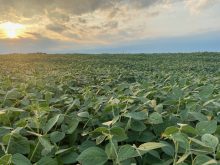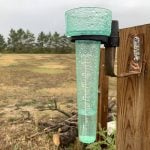Glacier FarmMedia — The worst phytophthora infection that Laura Schmidt of Manitoba Pulse and Soybean Growers has ever seen was in the province’s west, just south of Souris.
“Probably 25 per cent of the field was impacted,” the production specialist told attendees at a Westman Agricultural Diversification Organization field day near Melita, Man. “One in four plants were dying off, and that was actually in the drought year 2021.”
Phytophthora root rot is a water mould disease and a relative newcomer to Manitoba, affecting both field peas and soybeans. As with other soybean diseases, it’s gained presence in the province as soy acres expand.
Read Also
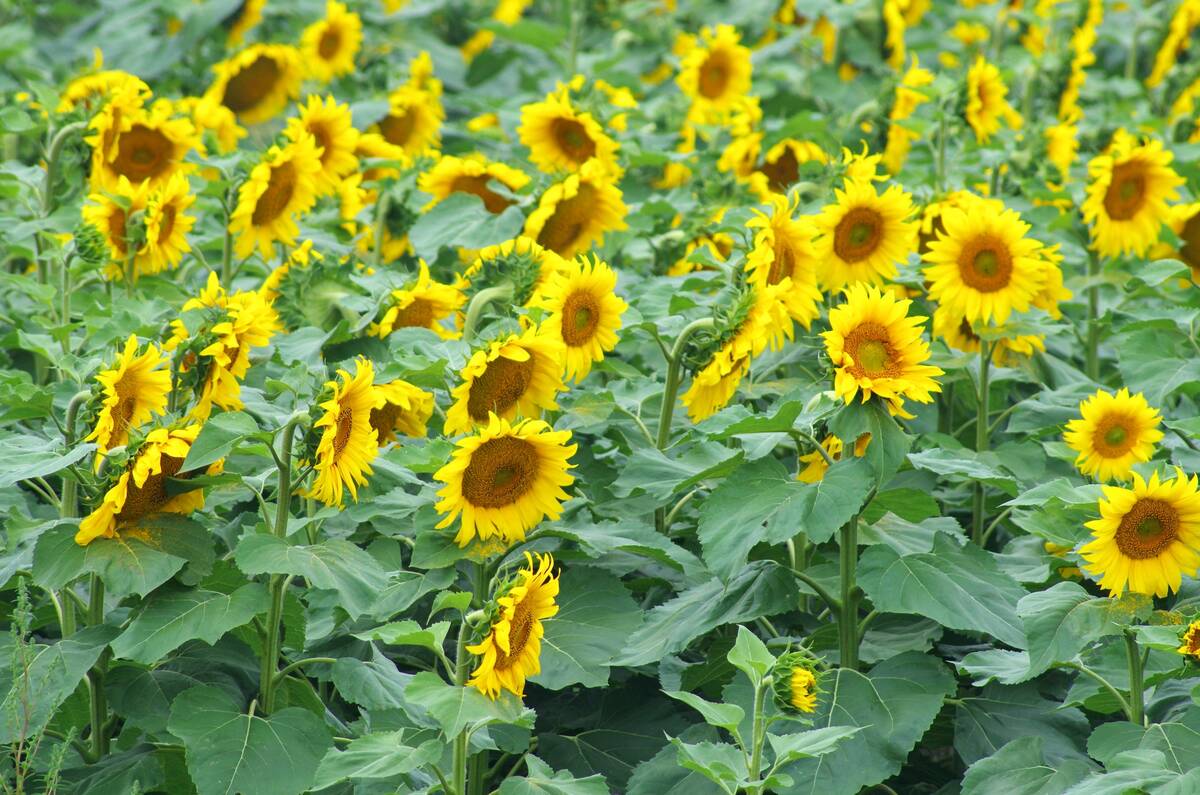
Made-in-Manitoba sunflower hybrid headed to market
Manitoba’s confection sunflower growers will have a new seed option next spring developed specifically for performance in the province. The…
The rise of soy
Today, soybeans have a solid foothold in Manitoba’s top three crops, vying with wheat and canola. In late June, Statistics Canada reported about 1.4 million acres were seeded in Manitoba.
Twenty years ago, they were almost non-existent. At the turn of the millennium, soybeans in Manitoba were a novelty crop, taking up less than 50,000 acres. By the middle of that decade, the crop had clawed its way to several hundred thousand acres.
From there, popularity took off. By 2013, it topped one million acres and hit an all-time high in 2017, when farmers planted almost 2.3 million acres.
Behind the crop, though, came diseases and pests. In 2019, Manitoba clocked its first positive soil tests for soybean cyst nematode. In 2021, above-ground symptoms were noted in central Manitoba.
Phytophthora has a longer history in the province. In 2017, as soybean acres reached their peak, samples submitted by MPSG to Agriculture and Agri-Food Canada tested positive for phytophthora in 35 per cent of the 89 fields surveyed that year.
Then came the drought. The industry group found no cases through its monitoring program in 2020 and 2021. In 2022, it found it in 11 per cent of fields.
Spore taste
The disease starts with resting oospores within the soil. When the oospores detect a nearby soybean root, they swim to it through a thin film of soil moisture.
The obvious first sign of a problem is when leaves start to wilt.
“The leaves stay attached to the plant when they’re wilted and you’ll have a brown lesion up from the soil,” Schmidt said. “When you pull those plants, they’ll pull really easily out of the ground because those roots are all rotted.”
Infection has a similar look to northern stem canker, which also causes brown lesions, but the latter attacks the stem rather than the root.
“When you pull that plant (infected with northern stem canker) out of the ground, there will be some resistance,” Schmidt said. “That’s a quick way to tell one from the other.
“But at the end of the day, a lab test at the Manitoba crop diagnostic lab in Winnipeg is going to be the best way to tell them apart.”
The field that sticks in Schmidt’s memory in the Souris area, southwest of Brandon, was infected with both phytophthora and northern stem canker.

The new disease reality
Soy and pulse experts like Schmidt urge producers to be more vigilant against soybean disease. Phytophthora root rot is one pathogen of concern.
“We’re still in a bit of a honeymoon where we’re not facing lot of major soybean diseases.” Schmidt said. “But coming down the pipeline, phytophthora is the one that we do have up here and, having this much moisture, I’d expect to see these symptoms in your soybeans, especially if you’re on tight rotations.”
Manitoba has had good conditions for development of fungal disease. May and June were cold and wet, sparking fears of sclerotinia and blackleg for canola growers, while Manitoba Agriculture noted problems with ergot in cereals.
For phytophthora, MPSG does have recent surveillance initiatives in place, Schmidt noted. Soil testing last year found less than five per cent of fields with symptoms, but “83 per cent of soils had phytophthora in them,” she said.
“Either we weren’t seeing symptoms mostly because it was dry or because major gene resistance and partial resistance was giving us some protection.”
Starting in 2022, the industry group began an assessment program to independently gauge resistance in different soybean varieties.
Built-in defence
There are two types of soybean resistance against phytophthora root. The first is major gene resistance, which largely stops infection at any growth stage in the plant’s life.
“That’s the most common form of resistance and the way it works is complete resistance to phytophthora throughout the growing season,” Schmidt said. “If (varieties) have a major resistance gene versus phytophthora, it will be listed in Seed Manitoba.”
The second type is partial resistance or field tolerance. In this case, plants still get infected but are able to tolerate the infection and keep growing. Symptoms aren’t as severe and can be variety specific.
“We’ve actually developed a soil test where we can sample phytophthora and find, specifically, what pathotypes are living in the soil,” Schmidt said. “We only used to be able to say we know it’s phytophthora.”
Knowing the race in a specific field can help producers choose varieties and better manage the disease, she noted, as well as informing development of new resistant soybean varieties and new approaches to management.
In 2016, four races of phytophthora were identified, according to the MPSG website. Ensuing years saw the dominant race shift and, in 2018, a new one was detected.
“We expect more PRR (phytophthora root rot) races and pathotypes to be identified over time, as is the case in Ontario and the U.S. where soybeans have a longer history,” the MPSG website states.
“Race-specific resistance is still a beneficial management tool, but partial resistance will become more important over time to combat numerous PRR races.”
Last year, the association surveyed 70 soybean fields and sent soil samples to a Quebec lab for analysis.



